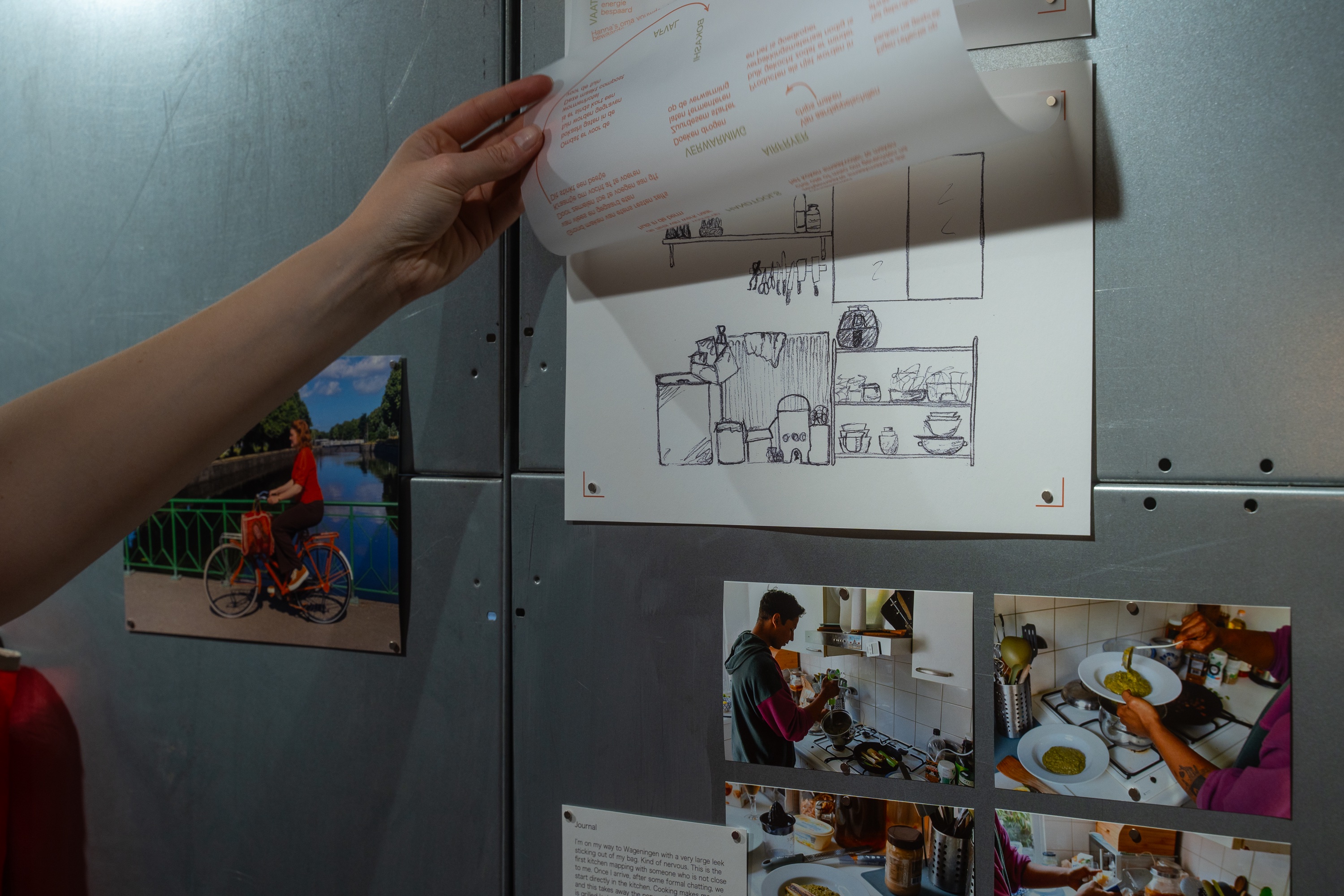Kitchen Table Transitions:
Interrupting Energy
Flows
–
Lisa Wisse
Interrupting Energy
Flows
–
Lisa Wisse

Energy flows through the kitchen in different ways. In this project, I focused on different typical phases: buying groceries, cooking, storing food, and food waste. What you see is a collection of approaches and interventions from five different people in their kitchens, considering how they minimise energy use, for example by cooking from scratch with raw products, eating collectively, and fermenting.

I collected these everyday approaches through a set method: I cooked together with people to break the ice and observed how they use their kitchens, afterwards we sat down, ate, and talked about energy use.


From these encounters I made kitchen mappings, pictures, and sound pieces, after which I created a silk-screened tablecloth.

The cloth displays ways of reducing energy use, and enabled me to share these findings in new conversations. To create a collective moment with everyone who was part of the project, I cooked a dinner where I implemented the things I learned about energy reduction, such as using heat for different purposes, cooking with seasonal foods, and using different kitchen techniques to create multiple flavors. This dinner was a moment to pose questions and bring together different perspectives through conversation, as well as mark my gratitude to the participants.


This project departed from my interest in exploring existing ways of reducing energy use in the kitchen, seeking accessible and inexpensive solutions. I engaged with various experts such as a dietician, a community centre workshop leader focused on cooking affordable meals, and a food historian. Looking at the developments of kitchens themselves in relation to energy use in the twentieth century in the Netherlands, we can see how, for example, the exploitation of the Groningen gas fields introduced the gas stove to Dutch households. In times of energy crisis, useful interventions to reduce energy use were introduced, such as the ‘cook box’.

These findings brought me to question how people today relate to the overarching issue of the energy crisis in their daily lives. In the midst of ongoing energy crises and the transition to new forms of power, the war in Ukraine, extreme weather due to climate change, and the phasing out of gas from Groningen have caused gas prices to rise further in the past year. Because of this energy crisis and related high prices, more people are confronted with the urgent need to reduce their energy use. Using co-creation and participatory design methods, I observed some of the ways people are dealing with these questions in their cooking activities. I also experienced how opening up to people and sharing a moment through collaboration can be of great value.


The relevance of this project lies in its careful observation of accessible and inexpensive ways to deal with questions of energy use that already exist in everyday life, without the need for new expensive products. Rather than taking a top-down, prescriptive approach, I wanted to shed light on what non-designers do and find important in their lives, and how design can build on this. As a designer, what drives me is to design encounters, moments where people interact with each other, as a way to approach social problems. What stayed with me during this master’s is my fascination for food, warmth, and movement. More than products, I am interested in designing moments, and finding ways to share these with larger audiences. In the future, I would love to further combine these aspects of problem-solving and experience design.


